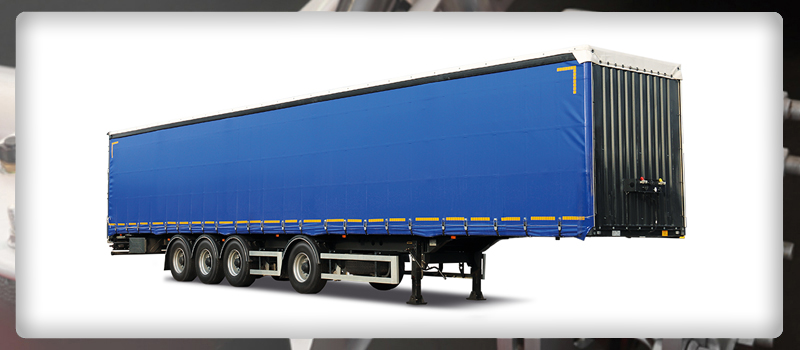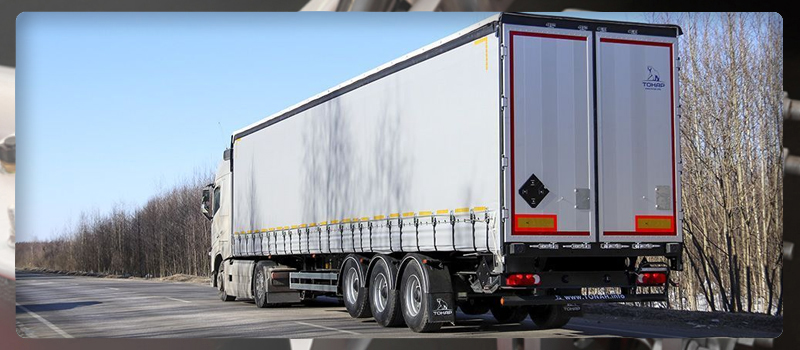The Foundational Future of Air Disc Brake Calipers
In 1992, commercial vehicle air brake systems took a tentative step into the future when antilock braking systems were mandated by the federal government.
Some truckers had a hard time trusting the technology, after an earlier attempt at mandatory ABS failed spectacularly. But this time was different, thanks to the advent of electronic, computer-controlled “brains” for the systems. Electronic sensors could react to a panic stop and alternately apply and disengage a truck’s foundation brakes far faster than any human ever could, to mitigate skids and help the driver maintain control until the vehicle was safety stopped.

It was a major advancement in commercial vehicle safety, and this version of ABS, building on what had been proven in the passenger-car market, proved to be a robust, reliable system that gave fleet maintenance managers few headaches.
But the ABS mandate was the harbinger of something much larger. “That’s because for the first time in history, commercial vehicle brakes gained both ‘eyes’ and a ‘brain,’” says Fred Andersky, director of customer solutions for Bendix. “Those sensors acted as electronic eyes to let the unit’s brain – the ECM – know the brakes were locked up and to start sending signals to avoid initiating a skid.”
That was only the beginning. In 2004, Andersky says, this brake evolution continued, with steer sensors showing up on ABS. “This was our first taste of sensors working together with stability control systems and steering and braking systems to give integrated control of a vehicle,” he explains. “And just a few years ago, additional sensors enabled active cruise control systems with braking – systems that can determine if a collision is imminent and alert drivers and apply brakes autonomously if there is no timely human response.”
The common denominator in this 30-year evolution of vehicle technology is the brake system, which has emerged as the foundational vehicle system that will enable stepping-stone solutions that will gradually add various automated and autonomous vehicle technologies to trucks. While we may eventually get to point where driverless trucks are commonplace, Andersky is firm in his belief that for the foreseeable future, the focus will be on developing Level 3 and 4 autonomous systems designed to make trucks safer, and drivers more productive and comfortable.
“We’ve already disclosed a great deal of the roadmap as to where we see commercial vehicle braking going in general,” says Jon Morrison, president of Wabco’s Americas business division. “I think we’re going to see the single-piston air disc brake caliper eventually emerge as a critical part of future braking systems. When you look at electronic brake control systems today, as well as the work we’re doing with electric truck builders like Nikola, as well as work for autonomous vehicles and platooning – which in our world is simply close following distances – all of those things require a robust foundational brake system with improved sensor technologies. And we are headed in that direction today. But – again – we will still see drivers behind the wheel for a long period of time to come. And our first job as we develop these brake systems will be to help and assist the driver.”
air disc brake calipers currently account for only around 25% of the Class 8 truck market today. But experts predict market penetration of around 50% in as little as three years.
Drum brakes fade away
In short, commercial vehicle braking systems – like so many other systems on trucks – are in the midst of an evolution away from long-accepted, rarely questioned specifications, toward more modern technologies.
According to Bryan Williams, vice president of metals engineering for ConMet, drum brakes still comprise 70% to 75% of the brake specs in the Class 8 truck market. But that’s changing.
“air disc brake calipers are becoming increasingly popular and will likely become the most popular brake option within the next three to five years,” Williams says. “Certain applications are more suited to disc brakes than drum brakes and vice versa, so application does play a role to a certain extent. However, most fleets will find over time that disc brakes are a better option than drum brakes due to their performance and maintenance advantages.”
Compared to the drum brake, the air disc brake caliper has multiple advantages, explains Walt Frankiewicz, president of Haldex North America and senior vice president for Haldex North America Sales, including close to cost parity once the full cost of the drum brake is considered. Additionally, he notes, air disc brake caliper performance in terms of brake torque output is significantly higher than on drum brakes. This means more stopping power available to the vehicle.
Most importantly, Frankiewicz notes, “the cost related to ease of service of the air disc brake calipers is in the range of only 20% of the cost for service of a drum brake for lining wear issues. Even better, some fleets today are experiencing an increased service interval with air disc brake calipers. However, this depends on the application, and as of today, claims of increased pad life are unsupported by and large.”
To date, most of the cutting-edge work on next-generation brake technology is focused on the tractor side of the tractor-trailer equation – a situation that Roger Jansen, OEM Account Manager, SAF-Holland, doesn’t find surprising. “As general rule, trailer adoption of air disc brake calipers has trailed behind tractor adoption rates in North America for a variety of reasons,” he explains.
“First off,” Jansen says, “most fleet put a lot more miles on their tractors than on trailers and usually replace tractors a lot more often than trailers, which can remain in fleets for long periods of time. “Given all that, most fleets are less inclined to spec more new technology on trailers.”
“Still,” Jansen says, “trailer air disc specs are certainly following the lead set by tractors, with around 20% of trailers fitted with those braking systems today. And those numbers seem to be growing by around 2% to 5% per year,” he notes. “And while there will always be a few applications that drum brakes will always be preferred – vocational and construction hauling, for example – I think the evolution on the on-highway side will follow the same model that Europe did and migrate steadily toward air disc brake calipers.”
The main reason this push will occur, Jansen thinks, is because of the performance consistency air disc brake calipers offer. “That’s the biggest advantage air discs have over drum brakes,” he says. “The onboard computing systems that are critical for integrating braking and safety systems on trucks work on precise mathematical models and calculations that demand very consistent and repeatable braking performance in additional to temperature and friction wear stability. air disc brake calipers – without question – have a clear advantage in these areas. They simply work better with ECUs and autonomous vehicle control systems.”
Keith McComsey, director of marketing and customer solutions for Bendix Spicer Foundation Brake, says his company is getting a lot more questions about air disc brake calipers than it was two or three years ago – a trend which he largely attributes to a growing emphasis on safety in the industry.
“air disc brake calipers don’t fade out the way hot drum brakes do,” McComsey explains. “They are always consistent, whereas hot drum brakes can require as much as an additional 70 feet of stopping distance compared to their capability when cold. This has obvious safety implications and gives the driver another operational inconsistency to deal with during the course of their day.”
Williams also emphasizes that air disc brake calipers don’t fade. “They also provide more consistent torque output than drum brakes, feel more car-like, have better stopping power, and pads are easy to replace. Disc brake disadvantages are higher [initial] cost, and the wheel ends run at higher temperatures than drum brakes. Drum brakes are still lower cost initially, meet the federal stopping distance requirements, are familiar to technicians, and run at lower temperatures overall.”
Adoption of air disc brake calipers in trailers lags behind tractors by a significant degree, however. “What I tell fleet managers is that whenever you add air disc brake calipers to another axle, they just get more effective in stopping the vehicle efficiently,” McComsey says. “But, if you have air discs on the tractor, and the drums on the trailer fade out, the front brakes then have to work that much harder to stop the truck, and their friction material wears out that much faster. So we believe there are a strong safety, maintenance and cost cases for spec’ing air disc brake calipers on the trailer as well.”
Cost has been the main barrier to increased air disc penetration in the North American Class 8 market, but Frankiewicz says that barrier is crumbling. In Europe, he says, the cost hurdle for air discs versus drum brakes was less significant because European drum brakes tended to be fairly expensive in their own right due to so many OEM alternatives.
“In North America, the cost of a drum brake has been far below the European cost level, which explains why the transition has not fully been accelerated in North America. However, as the cost curve continues downward on air disc brake calipers, and innovations from companies like Haldex drive the weight and ultimate cost of the air disc brake caliper to parity with drum brake, the advantages of the air disc brake caliper will be readily apparent in the bottom line of the fleets.”
Leave words, your message replied in 24hours.
Toget Brake
Brand Vision:"to become the China leading supplier of active vehicle safety systems within the commercial vehicle industry."
At Toget, focus on air disc brake calipers technics, exceeding industry standards is a strict requirement.

Brand names, original numbers, vehicle mark and models are only for reference purposes.






